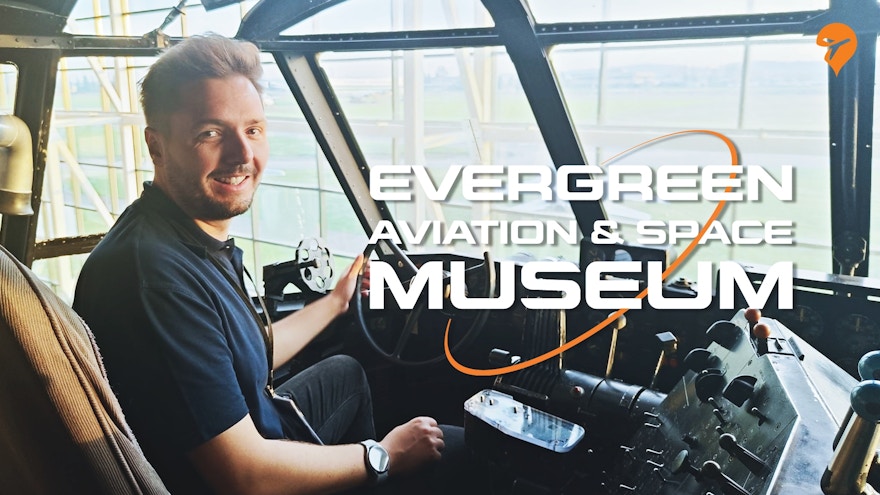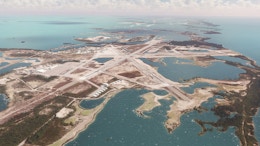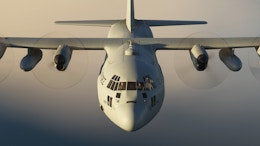Microsoft Flight Simulator celebrating its 40th Anniversary is no small feat. There are only a handful of franchises in the world of video games that can say they have achieved such a milestone. In order to celebrate such a momentous occasion, a party was held in McMinnville, United States, with journalists, developers, and other special guests. However, this was no ordinary press trip as this was a celebration of a huge milestone.
The 40th birthday party was held at the fantastic Evergreen Museum, which is truly fitting considering it’s the only place in the world where you can visit the Howard Huges’ Spruce Goose – one of the iconic historical planes included with the 40th Anniversary Edition. The museum itself is huge and a marvel to beyond. Spread across multiple hangers and outside exhibits, there’s an abundance of aircraft on display. These aircraft are from very different eras and all come with a rich history.
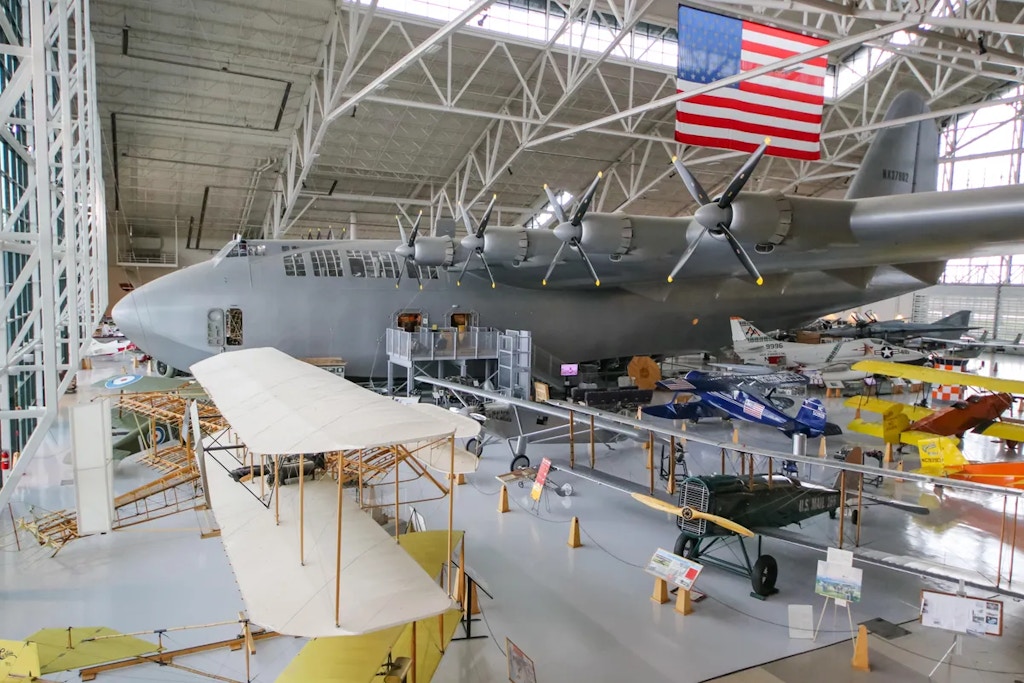
Microsoft recognised that this place was special. Whilst there was plenty of time to fly the 40th Anniversary Edition ahead of its public release, it was organised for everyone to go on a tour of the museum and step inside the world’s only Spruce Goose. Our tour included a brief history of the Wright Brothers’ first successful flight, an insight into how the DC3 went on to sell thousands of units, and also learn how on two occasions, the pilot of the Spirit of St. Louis fell asleep twice during the Atlantic crossing to France.
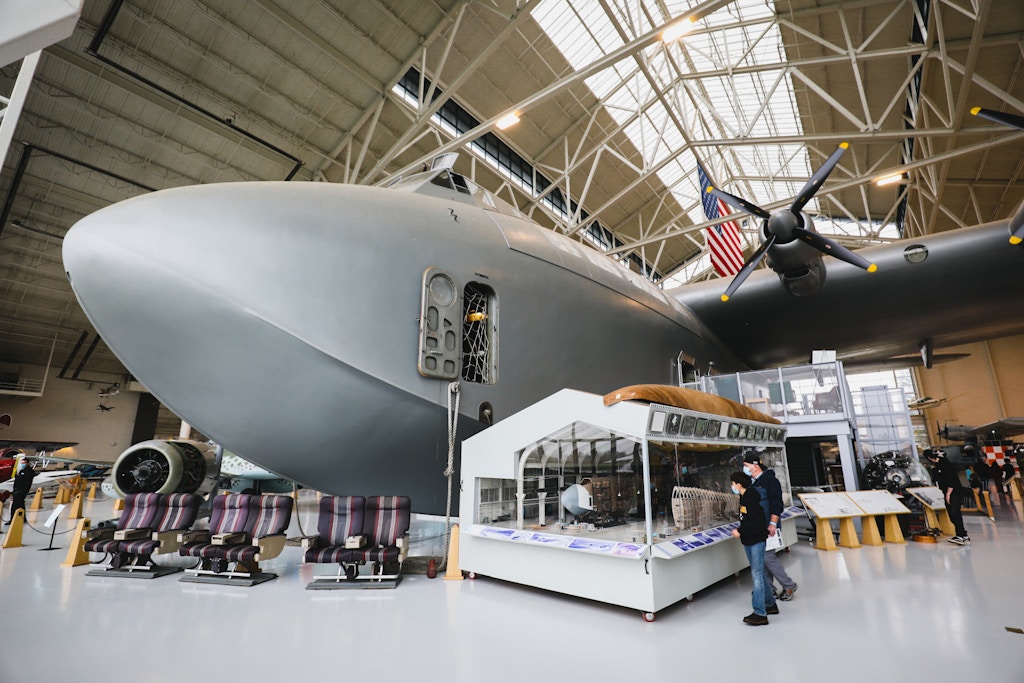
Even with as many exciting exhibits as the Evergreen Museum had, there was certainly one aircraft that quite literally eclipsed them all: the Hughes H-4 Hercules, aka the Spurce Goose. I am not kidding you when I say that it took up the entire hanger, leaving very little room at each end of the building. It made the DC3 and surrounding aircraft look like models that could be picked up and played with.
I’ll be honest, prior to the event, I had not even properly heard of Howard Hughes’s flying machine, outside of the press release and videos seen from Microsoft in relation to the sim itself. I had no prior knowledge and information about it, but I came away from the trip fascinated with just how this thing was meant to fly.
For those who may not be familiar with the Spruce Goose (just like me prior to the event), it has only ever had one pilot and only ever flown once. Just once and no higher than 25 feet above the ocean. In fact, it wasn’t even scheduled to fly the day that it did, so had Howard Huges not decided to have some fun and surprise the onlookers, it may have been the case that it would have never flown.
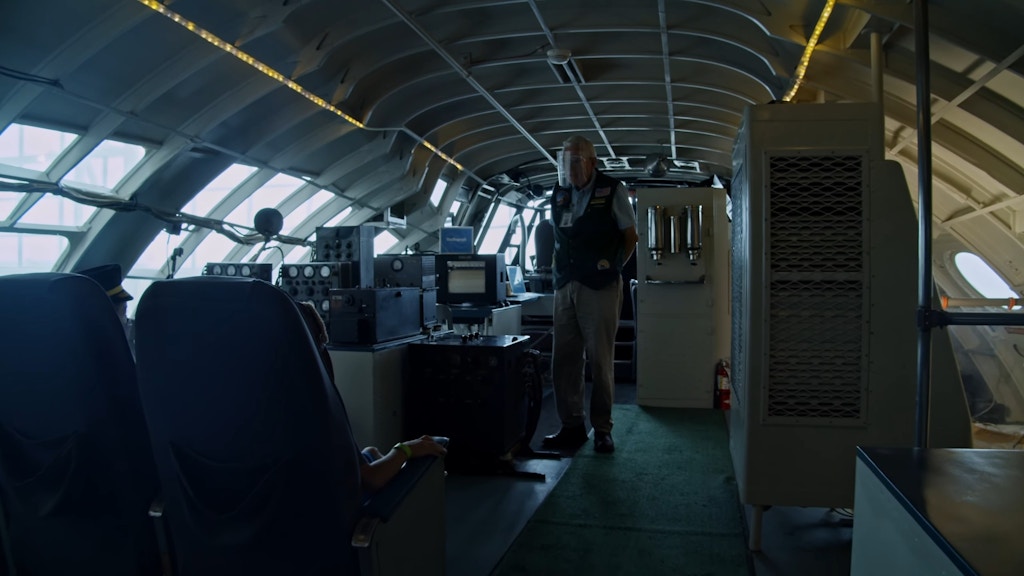
Howard Huges likes to surprise people, I was told and on November 2, 1947, he did just that. After a few slow water taxi tests, Huges was then planning to do a high-speed taxi test. However, much to the shock of everyone, including his onboard crew, he lifted the Spruce Goose out of the water and flew for 30 seconds, before safely landing again. It was originally designed to support the efforts of the war by transporting cargo like tanks or weapons, or a vast number of troops. The war then ended and there was then no need for this aircraft to ever then enter service. The one at the museum is the one and only prototype aircraft ever made and there’s nowhere else in the world you can get up close and personal.
I also learned a number of other interesting facts about the Spruce Goose:
- Its total wing space is just shy of 320 feet from tip to tip; the size of an American Football field.
- Due to the war, aluminum wasn’t allowed to be used so it’s primarily made of a wooden structure.
- 8 tonnes of nails were removed during the riveting process as the materials were stuck together by glue
- A team of people would sit behind each of the 8 engines with fire extinguishers just in case something went wrong.
- Huges was a germophobe and thus designed the plane to have fresh air sent throughout the aircraft, but also a specific flow directed to him at the pilot’s seat.
- Disney owned the Spruce Goose prototype for a number of years before then giving it up
It’s truly an aircraft enriched with history, so I implore you to find out more and even give it a try yourself.

The Goose itself certainly stood out from the aircraft perspective, as did the staff. All of the tour leaders and those employed by the museum were all super passionate and knowledgeable. You could tell that these aircraft all had a meaning to them in their own way. This highly enthused group is all led by Tyson Weinert, CEO of the Evergreen Museum.

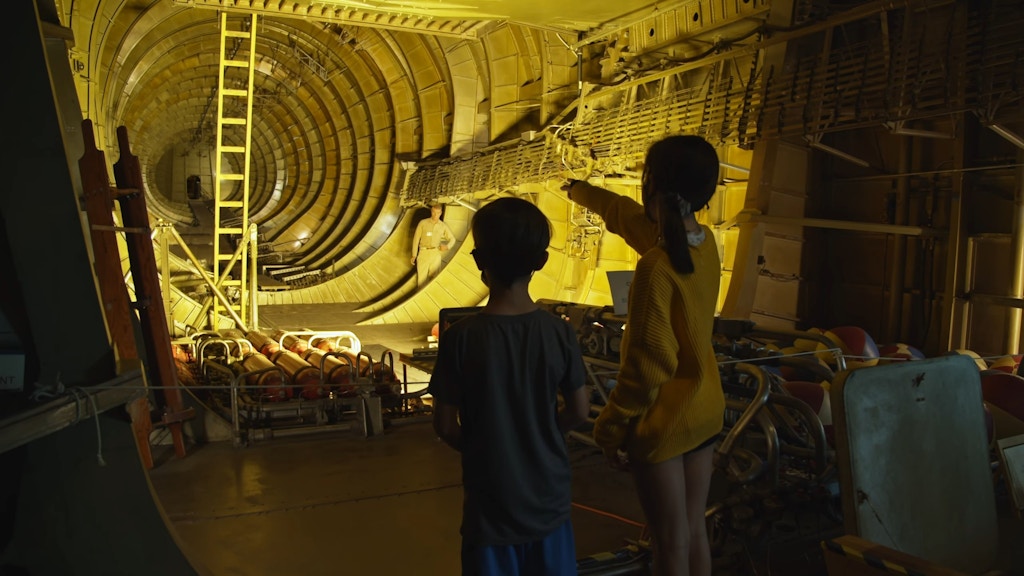
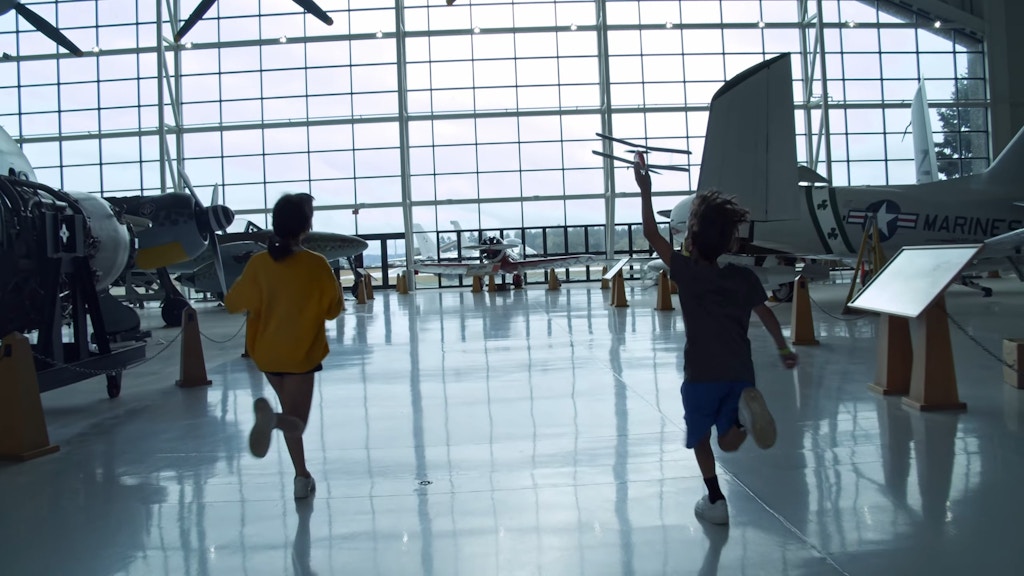
During our time at the event, we were able to speak to him about the museum, his role, and what he thinks the future holds.
When it came to working with Microsoft, Evergreen Museum was thrilled to be hosting the 40th Anniversary and also have been able to support the teams with scans and a treasure-load of data to help preserve these aircraft.
While Tyson wasn’t present for the original scans, as they were done a year ago, the Goose was almost “deconstructed” in order to replicate how the plane was when it originally flew. After the Goose’s first flight, Huges recognised many things that needed improving, as, after all, this was a prototype. New controls were added and modifications were made, but the only flying data available was from its singular flight. This is why Tyson told has how Jorg and his team had to simulate how the aircraft looked and flew when it took its first flight in the 1950s.
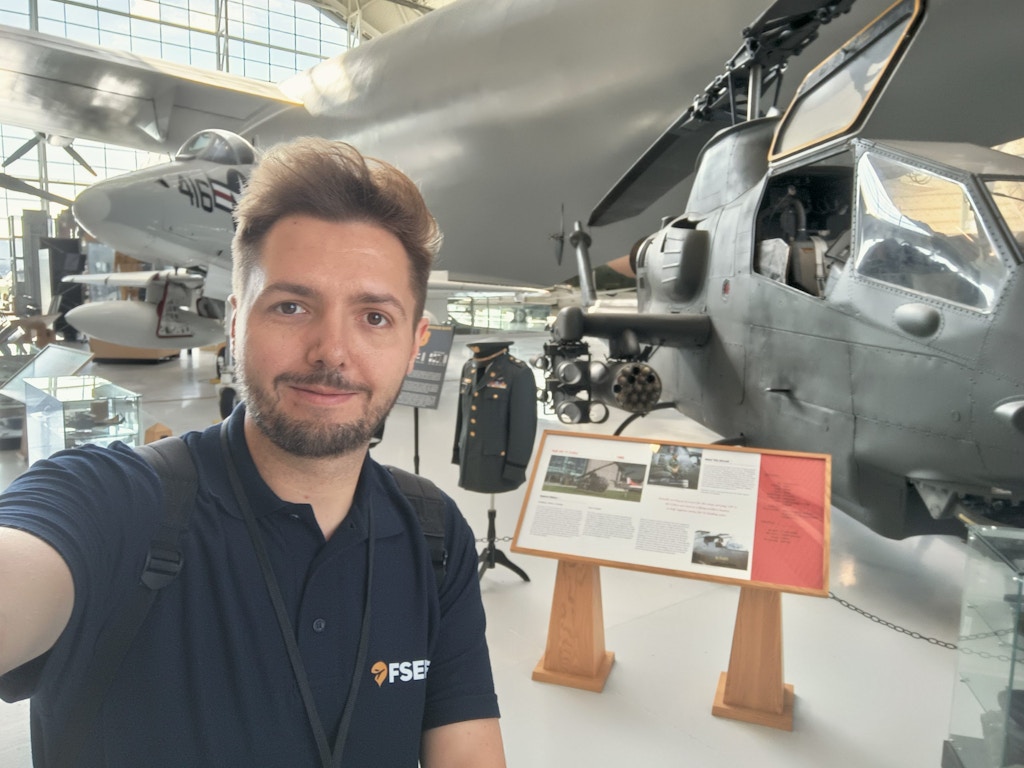
I asked Tyson how he feels about Microsoft preserving aircraft digitally in the simulator. His enthusiasm continued to shine when he said, “I couldn’t be more excited, as what our museum stands to do is inspire curiosity. There’s something special that happens in our lives to then have that first step for whatever we do in life. We want to celebrate that curiosity with our exhibits here.”
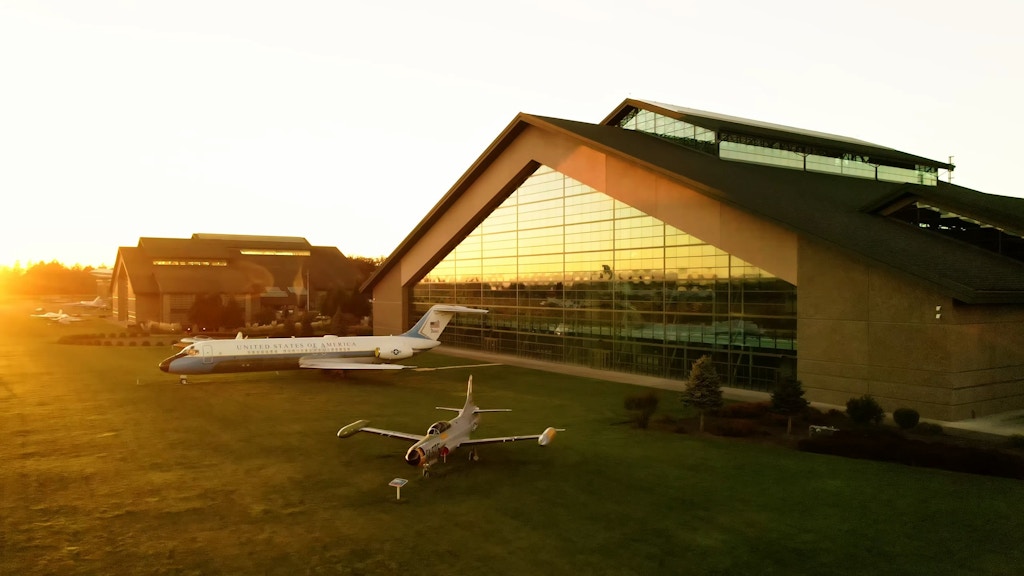
“That synergy between the real world and the simulator enables you to fly the Spruce Goose to Paris. You can now take the aircraft of your choice and have an educational experience with it, and there are no boundaries to it.”
With having these new historic aircraft now available to the masses to fly, I asked Tyson if he felt this would help museums around the world see an increase in visitors looking to satisfy that curiosity. “Yes – absolutely,” he said. “I am a firm believer that people will see the aircraft digitally and then feel much more compelled to see them in person. But to then get the story behind the aircraft from our brilliant tour guides who can share their knowledge and then hopefully have it pass it on. And this all fits into that collaborative ecosystem we have with Microsoft.”
I couldn’t resist concluding our time with Tyson to ask him what aircraft from the Evergreen museum he would like to see Jorg and the team take on next. “Great question and I am a bit biased! I also have a split answer: the PBY Catalina is quite special because it was a sea rescue plane and served some interesting missions. There’s also a category of planes that I think would be interesting for trainers. When I was training, I would use the T-34 Mentor. For many years, there was a large number of pilots who have established careers, but many started on the T-34, it would be quite a unifying experience. It’s a fun plane and how you learn aerobatics and formation flying.”
Tyson couldn’t help but then recall a memory of him and his buddies practicing formation flights on a tennis court so that they all knew their positions and the maneuvers to be in the correct space at the right time. “It’s like a choreographed dance and people were pointing and laughing at us, but now with Microsoft Flight Simulator, you can now practice these things just in the simulator. ”
“It’s just the perfect way for people to reunite, regardless of where they are in the world.”
The museum played the role of the perfect host for this fantastic occasion. Whilst it may be a little out of the way, it provides an insightful look into aviation’s past, whilst also looking forward to the future. The staff was excellent, and accommodating, with their insight inspiring generations to come. It is my hope that these new historical aircraft will light that spark for aviation museums to be visited more often so that not only can you fly historical planes in Microsoft Flight Simulator, but then dive deep into their rich history.
